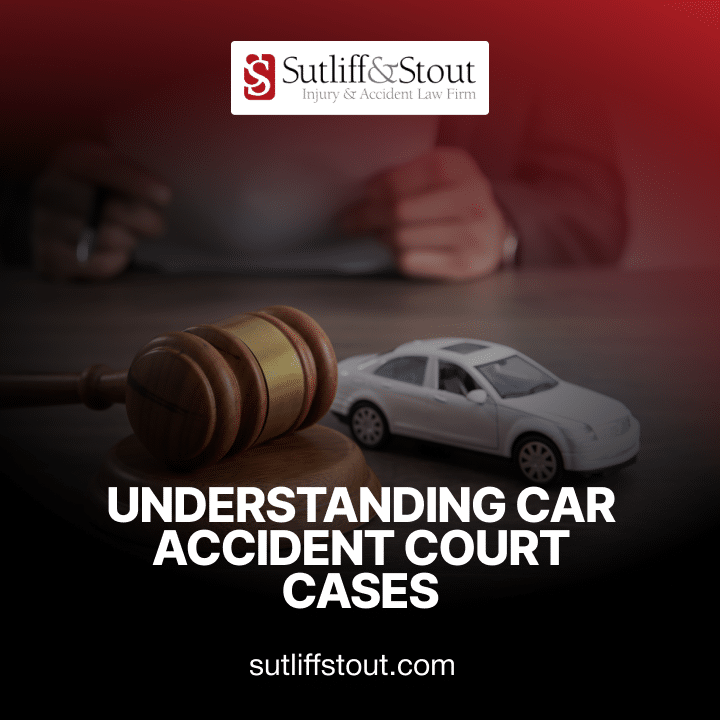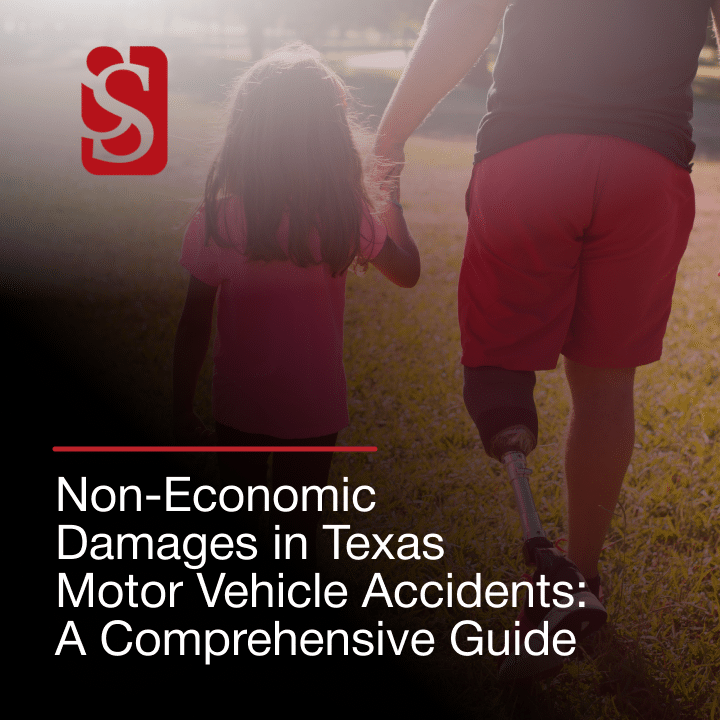Across America, car accidents change lives in an instant. For many, the impact extends far beyond the initial crash, manifesting as chronic pain that persists for months or even years.
This ongoing suffering doesn’t just affect physical well-being—it strains relationships, derails careers, and drains finances. While laws and procedures may vary by state, the fundamental principles of seeking justice for chronic pain remain consistent.
At Sutliff & Stout, we understand the unique hurdles you face, from skeptical insurance adjusters to the difficulty of proving an “invisible” injury. Our goal is to arm you with the knowledge you need to handle this challenging process, regardless of where and how your accident occurred.
Our firm has secured $1 BILLION in accident-related verdicts. Feel free to browse through the verified reviews of our satisfied clientele or read through our five-star rating on Google. Contact us today at (713) 405-1263 or through our secure online form.

Understanding Chronic Pain After Car Accidents
Chronic pain resulting from car accidents is a serious issue that affects many victims across the United States, often persisting long after the initial collision. In fact, a study published in the Journal of Transport and Health said that two (2) years after the crash, 45% of victims reported road crash-related chronic pain.
This rate varies according to age, from 16.5% for children under 16 to 51% for adult victims, according to the type of road user, from 38.3% for bicycles to 54% for motorized two-wheeler vehicles and according to severity, from 43% for lightly or moderately injured patients to 77% for seriously injured patients.
Another study claimed that a total of 40 individuals (44%) reported accident-related pain three (3) years after the accident. Survivors with chronic pain further showed significantly more symptoms of post-traumatic stress disorder (PTSD), depression, and anxiety, more disability, and more days off work.
What Qualifies as Chronic Pain in Personal Injury Cases
In personal injury law, chronic pain is generally defined as persistent pain lasting longer than the expected healing time for the specific injury. This typically means pain that continues for more than three to six months after the accident. It’s important to note that it can exist even when there’s no clear ongoing tissue damage or other medical cause.
For a chronic pain condition to be considered in a personal injury case, it must typically be:
- Directly related to the accident in question
- Documented by medical professionals
- Shown to have a significant impact on the victim’s life
While specific definitions may vary slightly by state, these general principles hold true across jurisdictions. For example, Texas courts often require substantial evidence linking the chronic pain to the accident and demonstrating its ongoing effects on the victim’s daily activities.
Common Types of Chronic Pain from Auto Collisions
Car accidents can result in a wide range of injuries, some of which may not be immediately evident. These injuries have the potential to develop into chronic pain conditions over time.
Here are some common injuries that can lead to persistent pain following a vehicular collision:
Back Pain: Vehicular impacts can cause various spinal injuries, including disc herniations, vertebral fractures, and muscle strains. These injuries may result in chronic lower back pain due to damage or displacement of spinal components, potentially affecting nerve function and muscular strength.
Headaches and Migraines: Traumatic events like car accidents can trigger post-traumatic headaches or migraines. These may stem from brain injuries, neck trauma, or the psychological stress of the incident. Such headaches can persist long-term, significantly impacting an individual’s quality of life.
Neck Pain: Beyond whiplash, neck injuries can involve nerve damage, disc injuries, and muscle strains. Chronic neck pain may arise from prolonged strain, spinal misalignment, or nerve compression, necessitating a targeted treatment approach to alleviate symptoms.
Neuropathic Pain: When nerve fibers sustain damage in an automobile accident, they may transmit erroneous signals to pain centers. This can result in a chronic condition characterized by shooting, burning, or stabbing sensations. Such pain can be particularly challenging to manage, as it often proves resistant to conventional pain management techniques.
Whiplash: This injury occurs when the head is abruptly jerked forward and then backward, causing stretching and tearing of neck muscles and ligaments. Symptoms may include neck pain and stiffness, headaches at the base of the skull, dizziness, and occasionally blurred vision. If not properly treated, whiplash can lead to chronic pain due to permanent soft tissue damage.
Accident victims must seek prompt medical attention and legal advice from Sutliff & Stout to ensure the protection of their rights.
Chronic Pain Management After A Car Accident
After a car accident, managing pain effectively is crucial for recovery. Here are various treatment options available for individuals suffering from pain related to motor vehicle injuries:
Acupuncture: This ancient Chinese healing technique involves inserting fine needles into specific points on the body to alleviate pain and promote healing.
Biofeedback: A relaxation technique that empowers patients with coping strategies, allowing them to gain more control over their pain symptoms.
Chiropractic Care: Chiropractors perform spinal manipulations and other alternative treatments to align the body’s musculoskeletal structure, potentially reducing pain and improving function.
Epidural Steroid Injections: These injections can help alleviate pain and enhance recovery by targeting inflammation in the affected area.
Ice Therapy: Applying ice to injured areas can help reduce swelling and pain in muscles, ligaments, or tendons.
Massage Therapy: This technique can help relieve muscle pain by increasing blood circulation to injured soft tissues, which may have tightened or healed incorrectly due to the force of the accident.
Medial Branch Blocks and Facet Joint Injections: These procedures involve injecting medications into the spine’s facet joints to block pain signals to the brain, potentially providing significant relief.
Medication: Anti-inflammatory drugs, muscle relaxants, and painkillers can help alleviate pain and reduce swelling associated with car accident injuries.
Neck or Back Brace: While these can be temporary pain management options, it’s important to eventually restore normal movement for proper healing.
Physical Therapy: This treatment encourages healing and strengthening of injured areas, addressing limited range of motion in nerves and muscles that can result from car accidents.
Radiofrequency Ablation (RFA): This procedure uses an electrical current from radio waves to heat a small area of nerve tissue, potentially reducing pain signals from the injury site.
How to Prove Chronic Pain in Car Accident Claims
Demonstrating chronic pain in car accident claims can be challenging, as pain is inherently subjective. However, with the right approach and evidence, victims can effectively prove their ongoing suffering and secure fair compensation.
Medical Evidence Required for Chronic Pain Cases
Comprehensive medical documentation is crucial in proving chronic pain claims. This typically includes:
Detailed medical records: These should outline your initial injuries, treatments, and ongoing symptoms.
Diagnostic test results: MRIs, X-rays, CT scans, or nerve conduction studies that show physical damage or abnormalities.
Pain management records: Documentation of ongoing treatments, medications, and their effects.
Physician statements: Professional opinions linking your chronic pain to the accident and describing its impact on your life.
Mental health evaluations: Records showing the psychological effects of chronic pain, such as depression or anxiety.
Documenting Pain and Suffering for Insurance Claims
Effectively documenting your pain and suffering is essential when dealing with insurance companies. Key strategies include:
Pain journals: Keep a daily log detailing pain levels, activities affected, and medication usage.
Photographic or video evidence: Document visible signs of your condition or how it impacts your daily life.
Witness statements: Collect accounts from friends, family, or colleagues who can attest to how your pain affects you.
Employment records: Provide documentation of missed work or reduced productivity due to your condition.
Lifestyle impact statements: Describe how chronic pain has altered your ability to engage in hobbies, social activities, or family responsibilities.
While specific requirements may vary by state, these documentation methods are generally accepted across jurisdictions. In Texas, for example, insurance adjusters may give significant weight to detailed pain journals and third-party witness statements when evaluating claims.
Expert Witnesses in Chronic Pain Lawsuits
Expert witnesses play a crucial role in chronic pain lawsuits throughout the United States. These professionals can provide authoritative testimony to support your claim. Common types of expert witnesses include:
Medical specialists: Neurologists, orthopedists, or pain management physicians who can explain the medical basis of your chronic pain.
Rehabilitation experts: Professionals who can testify about your long-term treatment needs and prognosis.
Occupational therapists: Experts who can discuss how your chronic pain impacts your ability to work.
Mental health professionals: Psychologists or psychiatrists who can address the emotional and psychological effects of chronic pain.
Economic experts: Professionals who can calculate the long-term financial impact of your chronic pain, including lost wages and future medical expenses.
The use of expert witnesses is common across the country, though the specific rules for their testimony may vary by state. In Texas, for instance, the court may require experts to meet certain qualifications, and their testimony must be deemed relevant and reliable under the Daubert standard, a principle followed by many other states.
By leveraging these strategies and gathering comprehensive evidence, chronic pain sufferers can build strong cases with the help of an experienced car accident lawyer from Sutliff & Stout.
Calculating Chronic Pain Damages in A Car Accident Settlement
When it comes to chronic pain resulting from auto accidents, accurately calculating damages is crucial for ensuring fair compensation. Here are some factors that can affect your claim:
Medical Expenses for Ongoing Pain Treatment
Chronic pain often requires continuous medical care, which can result in substantial costs. When calculating damages, the following expenses are typically considered:
- Doctor visits and specialist consultations
- Prescription medications
- Physical therapy sessions
- Alternative treatments (e.g., acupuncture, chiropractic care)
- Medical devices or assistive equipment
It’s important to document all medical expenses related to your chronic pain treatment. In most jurisdictions, you can claim both past and current medical costs directly related to the accident-induced chronic pain.
Lost Wages and Diminished Earning Capacity
Chronic pain can significantly impact a person’s ability to work, leading to financial losses. When calculating damages, two main aspects are considered:
Lost wages: This includes income already lost due to missed work or reduced hours.
Diminished earning capacity: This accounts for potential future income losses if chronic pain affects your ability to work or advance in your career.
To establish these damages, employment records, expert testimony from vocational rehabilitation specialists, and economic projections are often used. While the specific calculation methods may vary, most states recognize the importance of compensating for both current and future income losses.
Pain and Suffering Multipliers in Settlements
Pain and suffering damages aim to compensate for the physical discomfort and emotional distress caused by chronic pain. While there’s no uniform national standard for calculating these damages, many jurisdictions use what’s known as the “multiplier method.”
This involves:
- Calculating the total economic damages (medical expenses and lost wages);
- Multiplying this amount by a factor (typically between 1.5 and 5) based on the severity and impact of the chronic pain.
Certain factors include:
- The severity of the claimant’s injuries;
- The claimant’s prospects for a complete (and relatively quick) recovery;
- The impact of the claimant’s injuries on their day-to-day-life; and
- The clarity of fault for the underlying car accident.
For example, if your economic damages total $100,000 and a multiplier of 3 is used, your pain and suffering damages would be $300,000. It’s important to note that this is a simplified explanation, and actual calculations can be more complex.
Some states, like Texas, don’t have a cap on pain and suffering (non-economic damages) in most personal injury cases, while others may impose limits.
Future Medical Costs for Chronic Pain
Anticipating future medical needs is a critical component of chronic pain damage calculations. This may include:
- Projected costs of ongoing treatments and medications
- Potential surgical interventions
- Long-term therapy or rehabilitation needs
- Future medical devices or home modifications
Expert testimony from medical professionals and life care planners is often utilized to establish these costs. These experts can provide detailed projections of future medical needs and their associated costs.
While the specific legal standards for proving future medical costs may vary by state, most jurisdictions recognize the importance of including these expenses in chronic pain damage calculations. For instance, in Texas, courts generally allow claims for future medical expenses if they can be proven with reasonable certainty.
How To Maximize Your Chronic Pain Settlement
Securing a fair settlement for chronic pain after an auto accident can be a complex process. Insurance companies often attempt to minimize payouts, especially for conditions like chronic pain that can be challenging to quantify.
Negotiation Strategies with Insurance Adjusters
When dealing with insurance adjusters, a strategic approach can significantly impact your settlement outcome:
Gather comprehensive evidence: Compile all medical records, expert opinions, and documentation of how chronic pain affects your daily life.
Understand the full value of your claim: Calculate all current and projected costs, including medical expenses, lost wages, and pain and suffering.
Present a clear, compelling case: Articulate how the chronic pain has impacted your life, backed by concrete evidence.
Be patient but persistent: Don’t rush to accept the first offer. Insurance companies often start low, expecting negotiation.
Highlight future implications: Emphasize the long-term effects of your chronic pain on your career and quality of life.
Consider legal representation: An experienced attorney can often negotiate more effectively, leveraging their knowledge of insurance tactics and fair settlement values.
When to File a Lawsuit for Chronic Pain in Courts
While many cases settle out of court, filing a lawsuit may be necessary to achieve a fair outcome. Consider litigation when:
Negotiations reach an impasse: If the insurance company refuses to offer a fair settlement after good-faith negotiations.
The statute of limitations is approaching: Each state has a time limit for filing personal injury lawsuits. For example, in Texas, it’s generally two years from the date of the accident.
Complex medical issues are involved: If your chronic pain case involves complicated medical factors that may require expert testimony to explain.
Liability is disputed: When the insurance company contests fault or the extent of your injuries.
The settlement offer doesn’t cover future needs: If the proposed settlement fails to account for ongoing medical treatment and long-term effects of chronic pain.
Remember, filing a lawsuit doesn’t mean your case will necessarily go to trial. Often, the act of filing can prompt more serious settlement negotiations. Mediation can also be an effective tool for resolving chronic pain claims without the need for a trial. A mediator helps both parties communicate and work towards a mutually acceptable resolution.
It’s generally less expensive than going to trial, which can be particularly beneficial in chronic pain cases where medical costs may already be high. Mediation can also lead to quicker settlements compared to lengthy court proceedings.
Many courts across the country encourage or even require mediation before a trial date is set. For instance, in Texas, many counties have alternative dispute resolution requirements that include mediation for personal injury cases.
How a Car Accident Lawyer Can Help With Chronic Pain Claims
Chronic pain from a car accident can drastically alter your life, impacting your health, finances, and daily activities. While you’re managing persistent pain, handling legal matters adds unnecessary stress. This is where an experienced car accident lawyer becomes essential.
A skilled attorney offers clear guidance on your rights and options. They’ll thoroughly review your case, examining medical records, accident reports, and witness statements to build a solid foundation for your claim. Chronic pain can be challenging to prove, but your lawyer will gather compelling evidence, consult medical experts, and fully document your ongoing suffering.
Your attorney will also manage all communications with insurers, shielding you from potentially damaging statements and negotiating forcefully for a fair settlement.
Accurate calculation of damages is crucial in chronic pain cases. Your lawyer will assess current and future economic losses, including medical expenses and lost wages, while also quantifying non-economic damages like pain and suffering. They’ll ensure your claim reflects the full impact of your chronic pain.
Should your case go to trial, your attorney will provide comprehensive support, from filing court documents to representing you in proceedings. They’ll also tap into a network of resources, including medical and economic experts, to strengthen your position.
Most importantly, having a skilled lawyer allows you to focus on your recovery. With legal expertise on your side, you’re better positioned to receive just compensation for your ongoing pain and suffering.
Contact A Lawyer Now For Your Car Accident Settlement
At Sutliff & Stout, we’ve seen firsthand how chronic pain can derail lives after a car accident. It’s not just about the constant discomfort—it’s the sleepless nights, the missed work, and the strain on your relationships.
Our team doesn’t just handle your case; we stand with you. We’ve gone toe-to-toe with insurance companies trying to downplay chronic pain, and we know how to make them listen. From Houston to Dallas, we’ve helped Texas residents get the compensation they truly need to move forward.
Let’s have a real conversation about your situation. There will be no legal jargon, no pressure—just straight talk about your options and how we can help. Call us now at (713) 405-1263 or send a message through our secure online form. Our compassionate team is always available to help.
- What is a Catastrophic Injury? - January 30, 2025
- Essential Guide for Pedestrians Hit by Cars in Texas - January 30, 2025
- How to File a Wrongful Death Lawsuit in Texas - January 15, 2025








 (713) 405-1263
(713) 405-1263  550 Post Oak Blvd, Suite 530
550 Post Oak Blvd, Suite 530